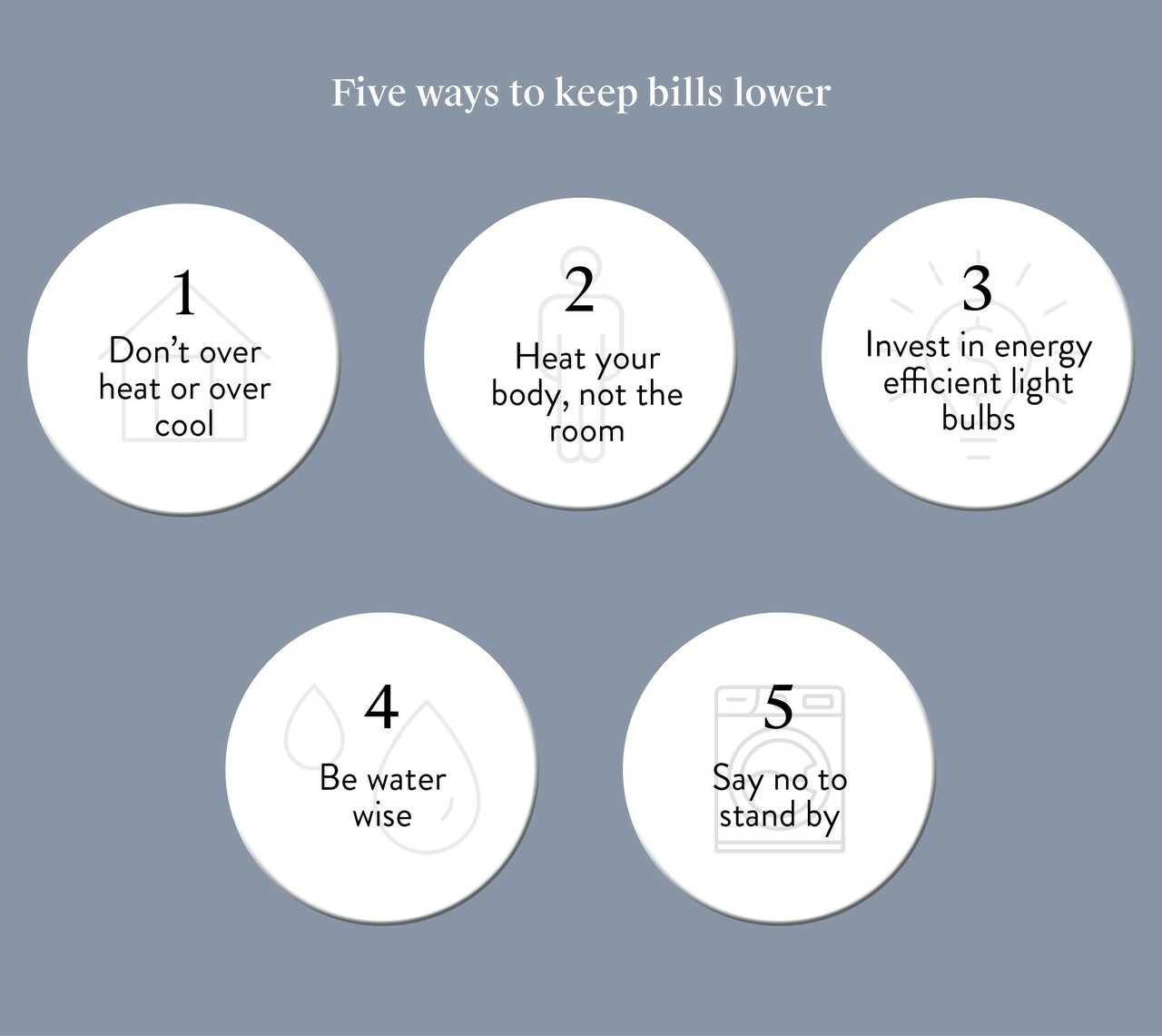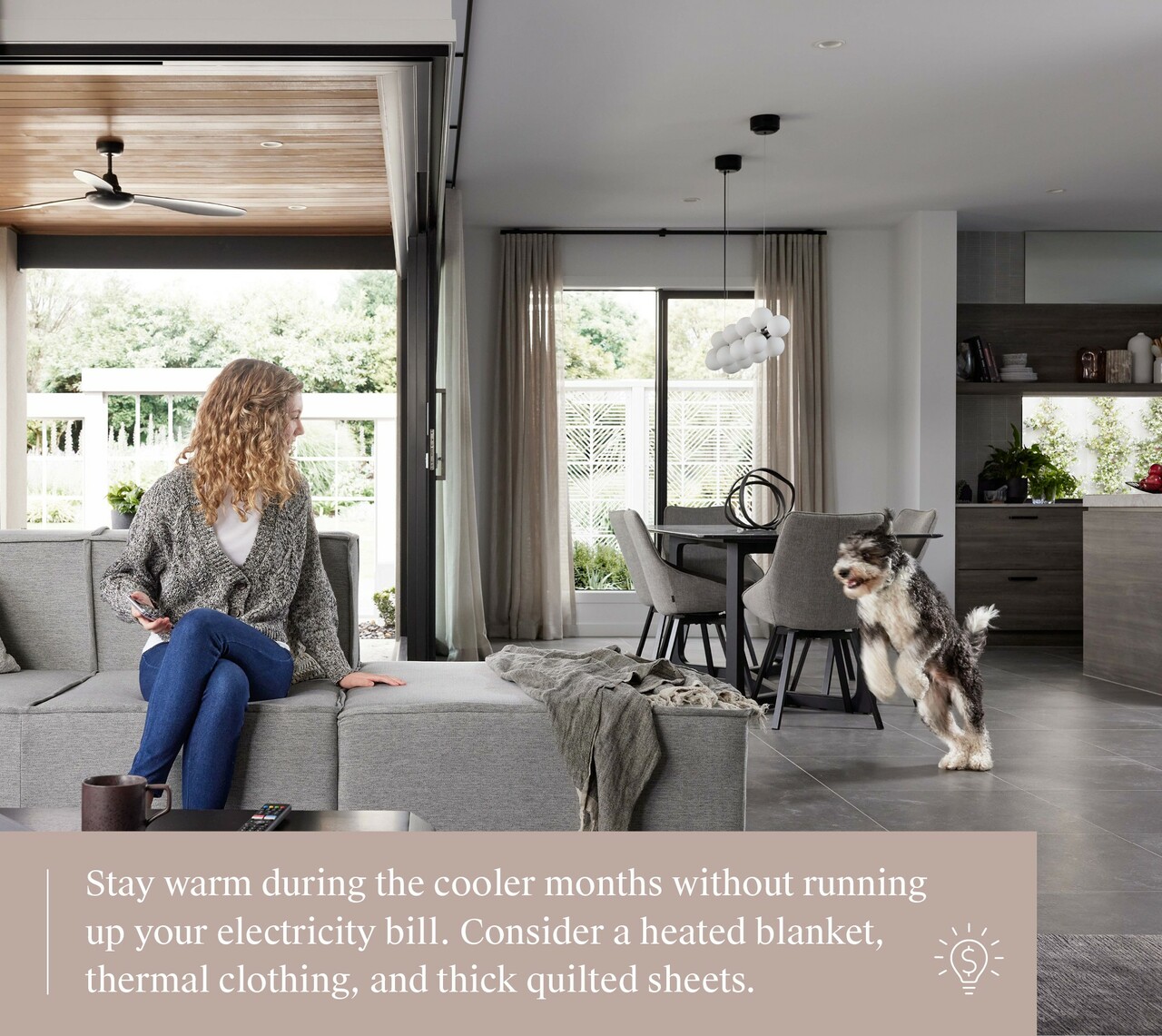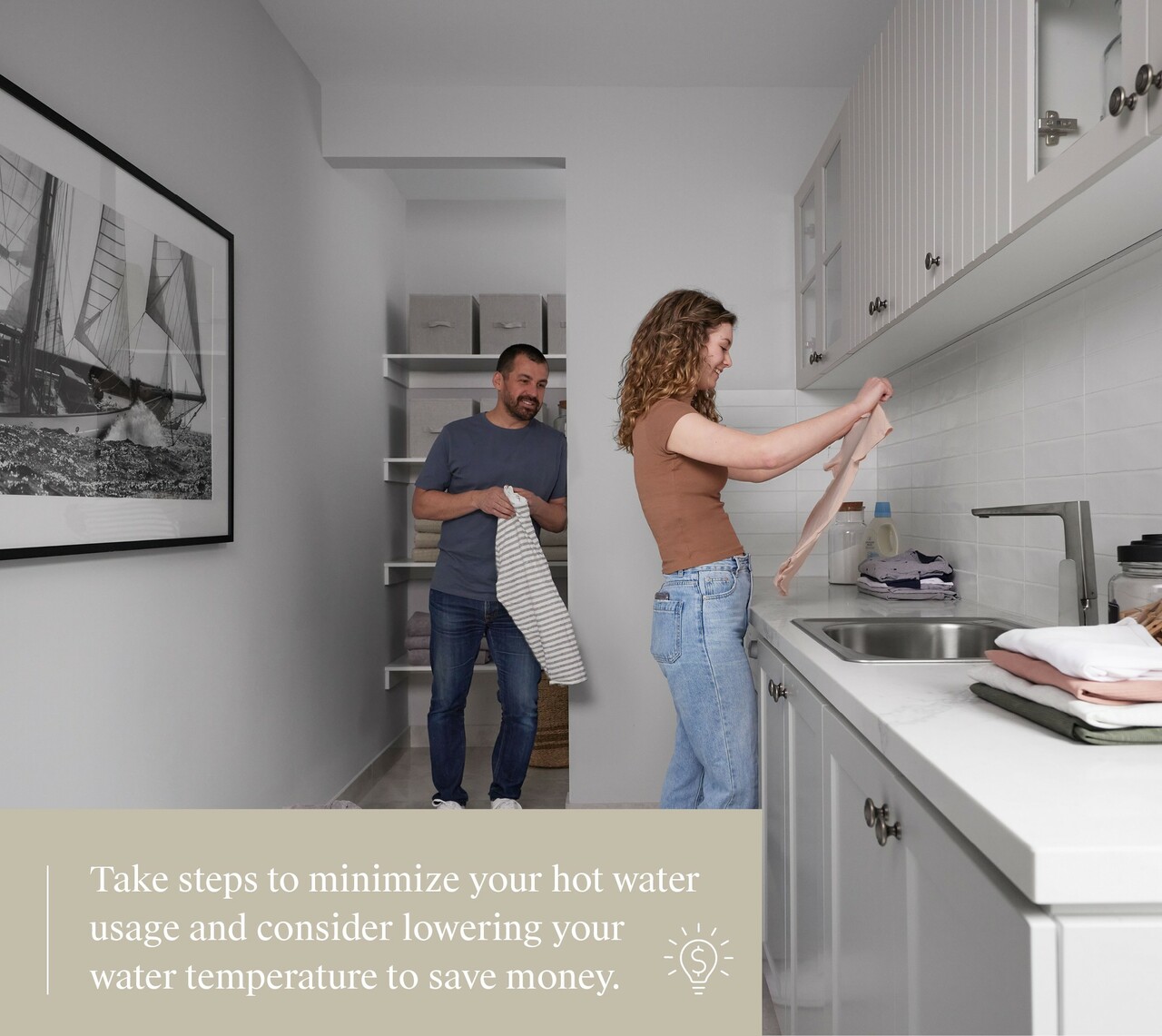Five Ways to Save on Energy Bills

Reduce your electricity bill and reach your saving goal faster. Here’s how
According to a 2020 study by the Australian Bureau of Statistics, the average Australian household spends over $50 per week on electricity and gas. That’s $2,500 per year. For larger households, or those living in colder climes, the amount can be significantly more.
Whether you’re renting and saving a home deposit, or you’re paying a mortgage, it’s worth looking for ways to save on energy bills. Make a few small changes and watch the savings add up.
Here are five ways to keep those bills lower, whether you’re renting or own your own place.

If you’re saving for your home deposit or paying off a mortgage, a few small changes could lower your bills and get you there faster.
1. Don’t over heat or over cool
Use your heating and cooling to keep your home at a comfortable temperature, not an extreme one. It’s tempting to turn your interior into a refrigerator in summer, or crank up the heat and wear t-shirts in winter. However, it can cost you dearly.
In winter, the recommendation for Victorians is to set your thermostat between 18 and 20 degrees. Over 20 degrees, your air conditioner has to work a lot harder, meaning you’ll add 10% to the bill for every extra degree of warmth.
In summer, set it to 24 degrees if you’re in SE Victoria, and up to 27 degrees if you live further north. Below that, the same equation applies. More summer energy saving tips can be found here.
2. Heat your body, not the room
Winter is when the bills really soar, especially in colder cities like Melbourne. Heating a whole house, especially today’s open plan designs, can get very expensive. Instead, think local.
Consider a heated blanket. Plug it in and snuggle under it on the couch. It will keep you toasty and warm where it matters.
When you’re up and moving about, thermal clothing is a great investment. It traps body warmth, stops icy breezes and is light and comfortable to wear under your clothes around the house. No more bulky coats!
At night, switch out linen or cotton sheets for flannel, add a thick quilt and consider a hot water bottle to take off the chill.

3. Invest in energy efficient light bulbs
This is one of the easiest steps to take and can save considerable money. Old-style incandescent or halogen light bulbs use up to 75% more electricity than compact fluorescent light (CFL) options.
Energy-efficient bulbs do cost a little more to buy, but they also last far longer before they need to be replaced. Investing a few extra dollars at the outset can be well worth it over time.
4. Be water wise
Heating your water to a higher temperature than required can cost you. If you have a storage hot water system, your water temperature must be at least 60 degrees to ward off Legionella bacteria, but it doesn’t need to be any hotter than that. For continuous flow systems, 50 degrees is more than adequate.
Most hot water systems allow you to adjust the thermostat yourself, although a few require your plumber to come and help. If you can do so, consider lowering the water temperature and saving some money.
Where possible, minimise your use of hot water. Some tips include:
- Wash clothes in a cold or cool wash; unless they’re heavily soiled, this will work just as effectively as hot.
- Front loaders use less water and up to 50% less energy than a top loader.
- Fix leaking taps as soon as possible rather than letting them run.

5. Say no to stand by
Most of us leave our appliances on standby mode when they’re not actively in use. But did you know that standby power is responsible for up to 10% of your power bill?
Make a habit of switching everything off before you go to bed for some easy savings. A smart power board can help make this task easier, by letting you set a timer to switch off standby electricity at a given time of night.
By making a series of little changes, you can do a lot to save on energy bills. Get started today and take the pressure off your budget.
Explore the Finance section of our Home Files blog for more tips and tricks on saving for your dream home. Or speak to one of our in-house construction finance specialists on how to get into your new dream home faster.
